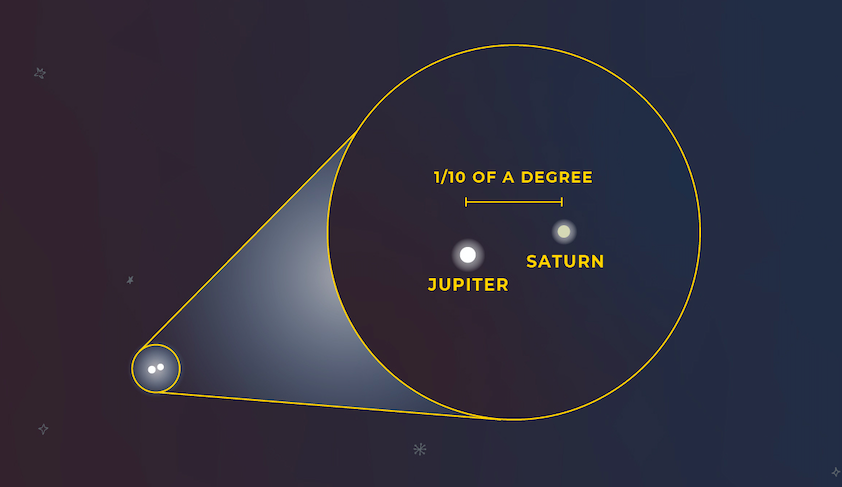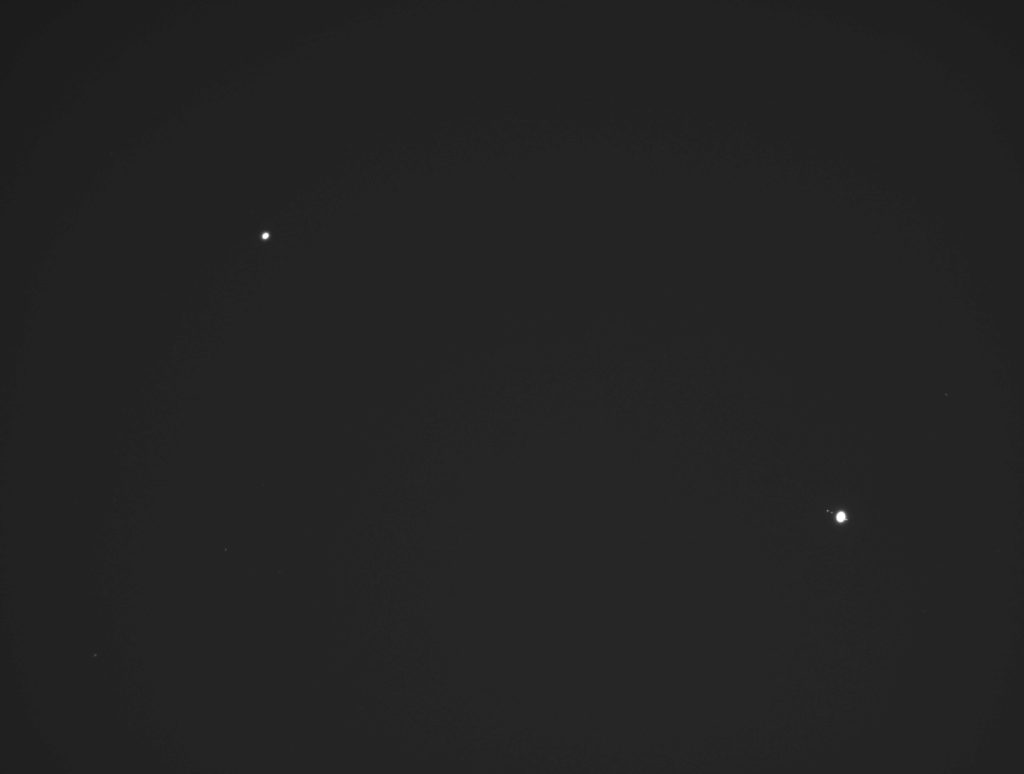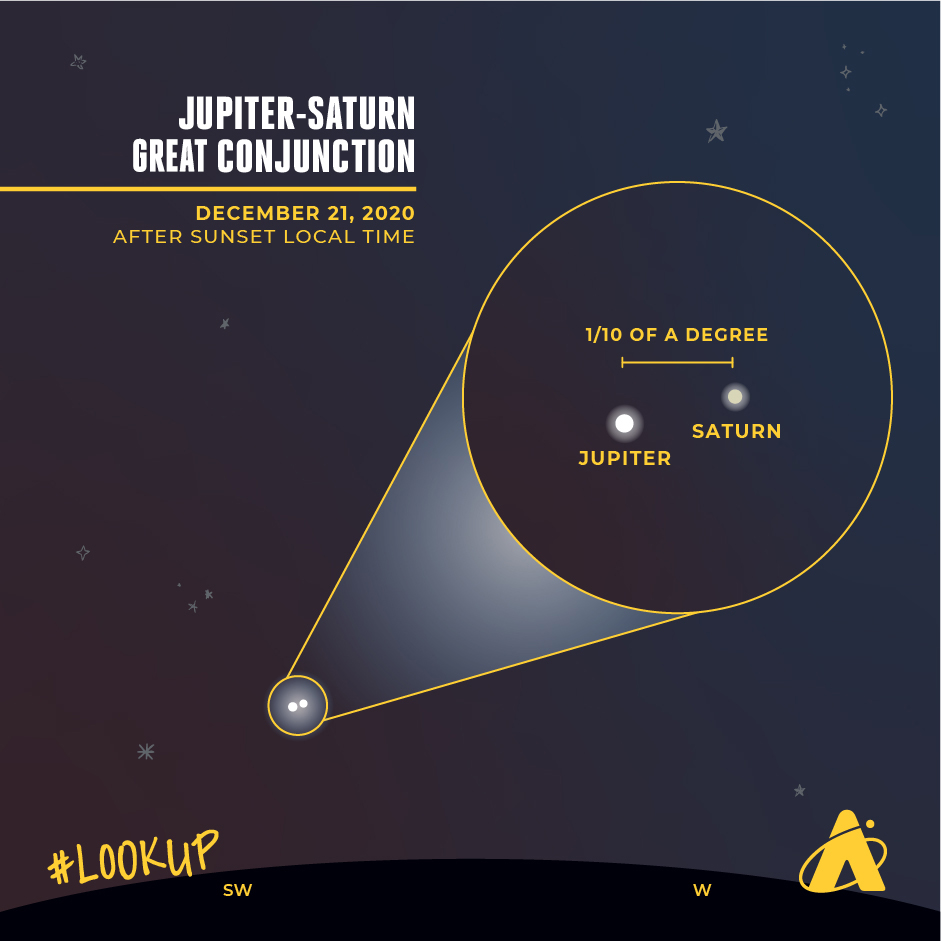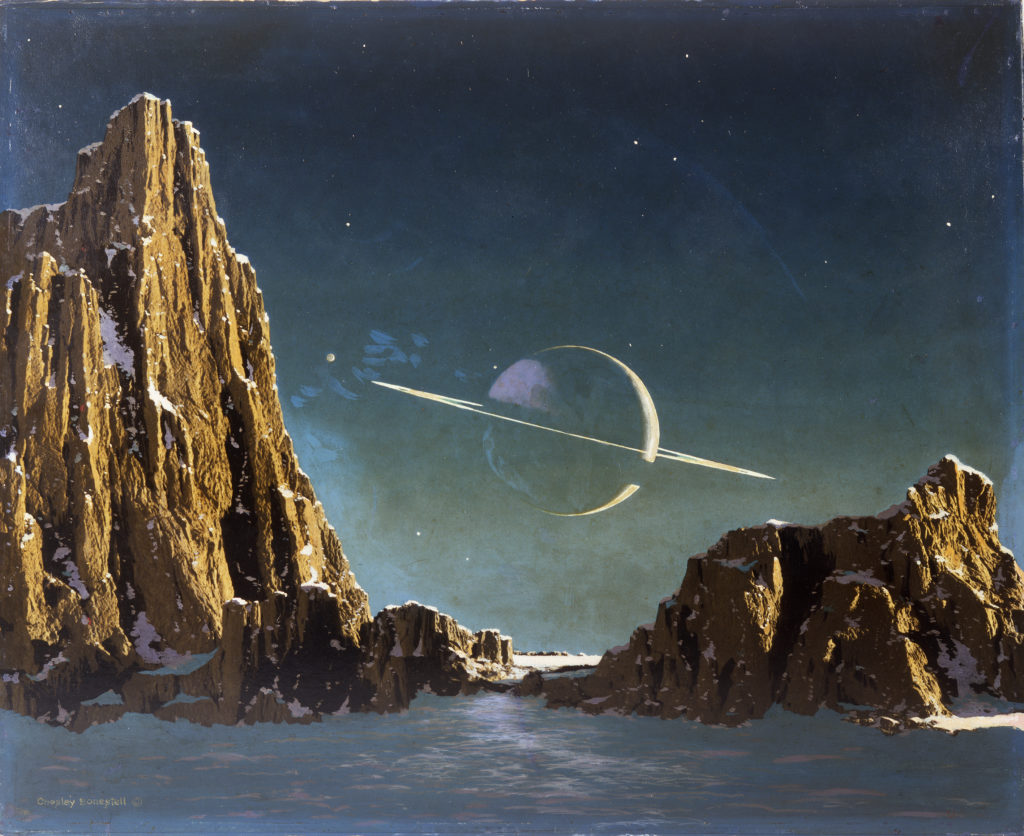The Jupiter And Saturn Great Conjunction Of 2020

Header Image: The Jupiter-Saturn Great Conjunction happening in December 2020 can be viewed when lookin southwest after local sunset.
In astronomy, we often tie a time period to something. “It’s been 50 years since this one thing happened,” or “it’s been 3 years since we saw this other event in the sky.” Every once in a while, we get to view something, or a version of something, that literally no one currently alive on Earth has ever seen. Such an event, called the Jupiter-Saturn Great Conjunction, is happening in December 2020!
Fixed Stars and Wandering Stars

People have been looking up at the sky, well, forever. We’ve been trying to figure out the meaning of what we see in the sky for just as long: what are those lights I see, and what are they doing there? And our questions can go deeper: why do they move as they do, and what does this movement mean?
There are several thousand lights visible in a dark sky. Some are bright, many are dim. These lights appear to move across the sky, night after night. As time passes, different lights are visible during different parts of the year, but their relative positions to each other stay the same. In other words, they are “fixed.” We call these “fixed” lights “stars,” a word that comes to English from many different languages including Latin (“stella”) and Greek (“aster”).
Watching the stars, year after year, people noticed that the movements of a few of the stars appeared different from all the others. Some moved in one direction, then another, with the fixed stars as a backdrop. Others were seen in the morning before sunrise or in the evening after sunset, never straying too far from the Sun. The ancient Greeks called these special moving stars planētes asteres, which means wandering stars, or simply, planētai, which means wanderers. The English word is planets. They were not the first people to notice these wandering movements; there are even earlier records from the Babylonians, and it is highly likely these sorts of observations go far, far into the distant past throughout cultures all over the world. The movements set these wandering objects apart as something important, something to be noticed, watched, tracked, and even interpreted.
Sometimes these wanderers came in close proximity to each other; this is called a conjunction. People took—and still take—special notice of conjunctions, and the meaning of conjunctions was and is discussed, debated, revered, reviled, or feared. To many, conjunctions were auspicious events.
The Great Conjunction of Jupiter and Saturn

Jupiter and Saturn are two celestial objects that periodically experience conjunctions. Jupiter’s quicker movement and Saturn’s slower movement bring them to the same direction in the sky as seen from Earth approximately every 20 years. The last conjunction of Jupiter and Saturn was in mid-2000. Throughout the first half of December 2020, you will be able to see these two planets appearing to draw closer together each night. The best time to see them is about an hour after your local sunset time. At Chicago’s latitude, look to the southwest to see two close objects fairly low in the sky. The brighter one is Jupiter. The dimmer one is Saturn. If you want to see exactly where and when to look for them for your specific location, check out Stellarium’s online web app. Just input a date, time, and location, and see when it would be best for you to find our two close wanderers.
On December 21, 2020, Jupiter and Saturn will appear so close together that they will be about 1/10th of 1 degree apart. This very close conjunction is given a special name: a great conjunction. They won’t appear to touch each other, but the proximity of this conjunction is closer than any Jupiter-Saturn conjunction since July 1623. That particular conjunction would have been hard to see because it would have been mostly lost in the glare of the setting Sun. The last time Jupiter and Saturn appeared this close AND they were easily seen away from the Sun’s glare? March 1226. This December’s conjunction is, indeed, a rare event. If you look at Jupiter and Saturn through a moderately magnified telescope, you should be able to fit both of them in the same eyepiece view.
And in case you were wondering, yes, occasionally two planets do appear to graze or even merge briefly. This is called a mutual occultation. The last mutual occultation of Saturn by Jupiter was about 8,000 years ago. The next mutual occultation to be seen on Earth—albeit not as easily, due to the glare of the Sun, and not spectacularly, due the need for a telescope and the small relative sizes of the two objects—is a Mercury-Neptune occultation in the year 2067. There is also a mutual occultation of Jupiter by Venus in 2065, but because the two will be so close to the Sun, it will be extremely difficult, if not impossible, to observe them.
Can You Spot This Conjunction?
If your local weather does not permit you to view Jupiter and Saturn on December 21, 2020, don’t worry. You will see them appear to slowly draw closer in the days just before December 21 and slowly move apart in the days after. Whenever you get a clear patch of sky after sunset right around December 21, 2020, go out and view this amazing once-in-400-years spectacle, and let us know what you see by tagging #LookUp on Instagram and Twitter.
Keep Exploring Online With Us

Learn more about this great conjunction through our historic artifacts and collections pieces in the Adler Planetarium’s online exhibit through Google Arts and Culture. Watch an exclusive episode of Sky Observers Hangout where our astronomy educators will show you how to spot the extremely rare Jupiter and Saturn Great Conjunction on December 21st, the winter solstice. Don’t forget to subscribe to our YouTube channel to get reminders about all of our online educational astronomy programs, including Skywatch Weekly.






